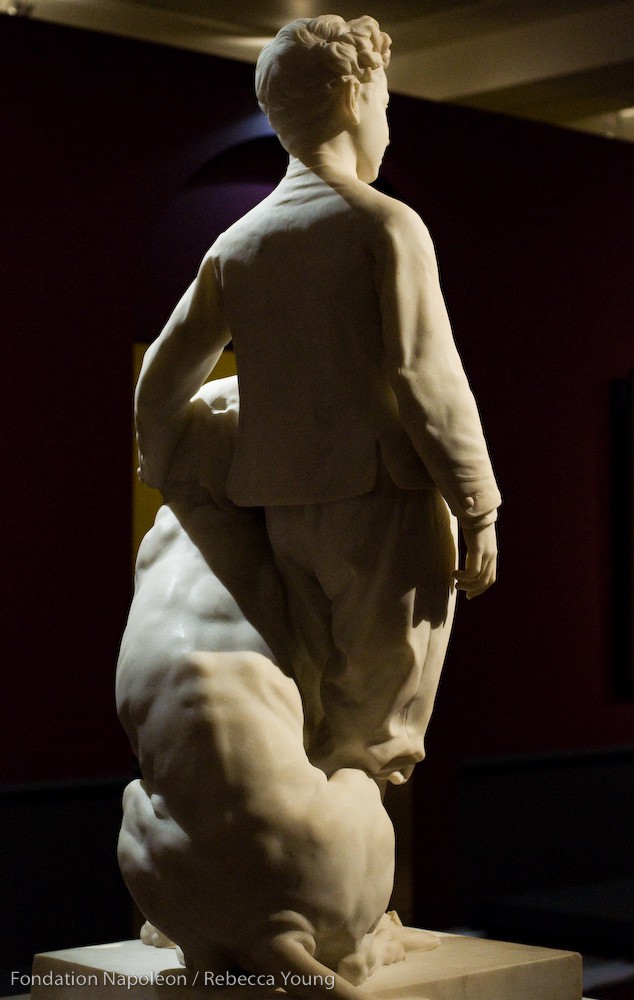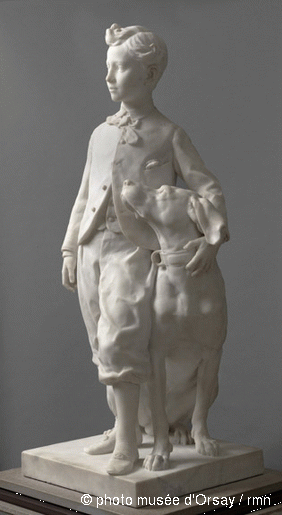Carpeaux was introduced to court by Princess Mathilde in about 1863, and as a result of her patronage became the Prince Imperial’s drawing and sculpture master. Towards the end of 1864, he was asked to do a portrait of his young pupil. It was in effect a double commission, since the Empress wanted a bust and the Emperor a standing figure. The sittings began in April 1865 in an atelier set up in the Orangery in the garden of the Tuileries palace. Carpeaux made several portrait models of the nine-year old child: one a naked torso, one in the costume of a grenadier, one standing holding his hat and, finally, this portrait with his dog Néro. On 6 May, the plaster version was unveiled to the Empress and her entourage to a chorus of “exceptional bravos”. The work was to have the same reception when the marble version was presented at the Salon of 1866. Critics said it had the grace of “Florentine troubadour” in modern dress.
The addition of a dog softened what was in effect an official portrait of the young prince, and as a result the sculpture group was quite naturally to receive much public acclaim. The young boy, standing, places his hand on the dog’s neck and collar, whilst the dog rubs around the child’s legs. The natural pose and the dog’s head turned towards the boy perfectly express the charming relationship between the two. The simple clothing – short velvet jacket and baggy trousers – reinforce the natural quality of the work. The Prince is here shown without distinction of rank; indeed it was this absence of imperial symbolism which led to the work’s continued popularity even after the fall of the regime, under the title ‘Child with dog’. Many versions, of different sizes were done many different media – terracotta, bronze, Sèvres biscuit, porcelain, etc.
This statue of ‘The Prince Imperial and his dog Néro’ was to follow the Imperial family into exile. After a brief moment at Arenenberg, the work was sent to Farnborough where it was placed in the family Funeral Chapel after the death of the Prince in 1879. It entered the French national collection in 1930. And in 1927, the Prince Napoleon offered bronze version of the group, which can still be seen facing the gardens at the Château de Malmaison.
Karine Huguenaud (tr. P.H.)
February 2003



